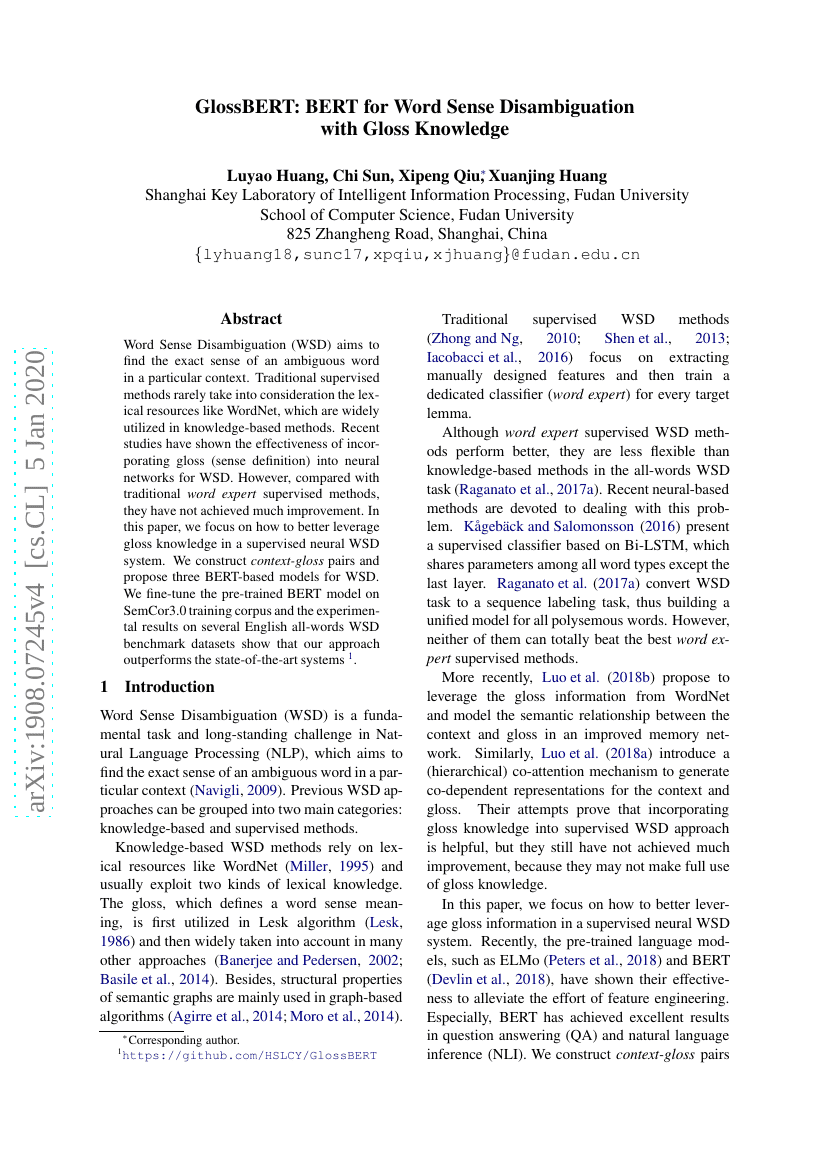Command Palette
Search for a command to run...
Luyao Huang; Chi Sun; Xipeng Qiu; Xuanjing Huang

Abstract
Word Sense Disambiguation (WSD) aims to find the exact sense of an ambiguous word in a particular context. Traditional supervised methods rarely take into consideration the lexical resources like WordNet, which are widely utilized in knowledge-based methods. Recent studies have shown the effectiveness of incorporating gloss (sense definition) into neural networks for WSD. However, compared with traditional word expert supervised methods, they have not achieved much improvement. In this paper, we focus on how to better leverage gloss knowledge in a supervised neural WSD system. We construct context-gloss pairs and propose three BERT-based models for WSD. We fine-tune the pre-trained BERT model on SemCor3.0 training corpus and the experimental results on several English all-words WSD benchmark datasets show that our approach outperforms the state-of-the-art systems.
Code Repositories
Benchmarks
| Benchmark | Methodology | Metrics |
|---|---|---|
| entity-linking-on-wic-tsv | GlossBert-ws | Task 1 Accuracy: all: 75.9 Task 1 Accuracy: domain specific: 76.7 Task 1 Accuracy: general purpose: 75.2 |
| word-sense-disambiguation-on-supervised | GlossBERT | SemEval 2007: 72.5 SemEval 2013: 76.1 SemEval 2015: 80.4 Senseval 2: 77.7 Senseval 3: 75.2 |
| word-sense-disambiguation-on-wic-tsv | GlossBert-ws | Task 1 Accuracy: all: 75.9 Task 1 Accuracy: domain specific: 76.7 Task 1 Accuracy: general purpose: 75.2 |
Build AI with AI
From idea to launch — accelerate your AI development with free AI co-coding, out-of-the-box environment and best price of GPUs.